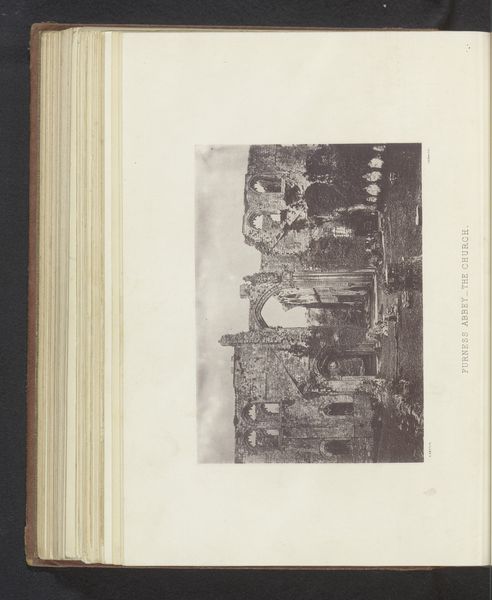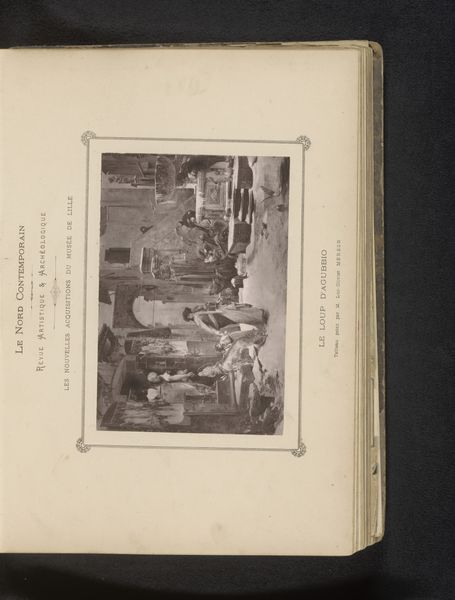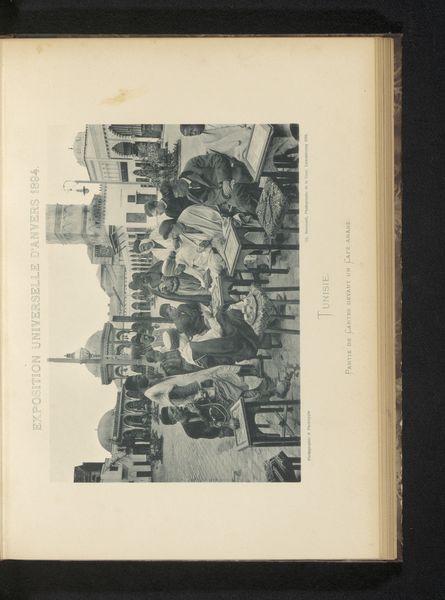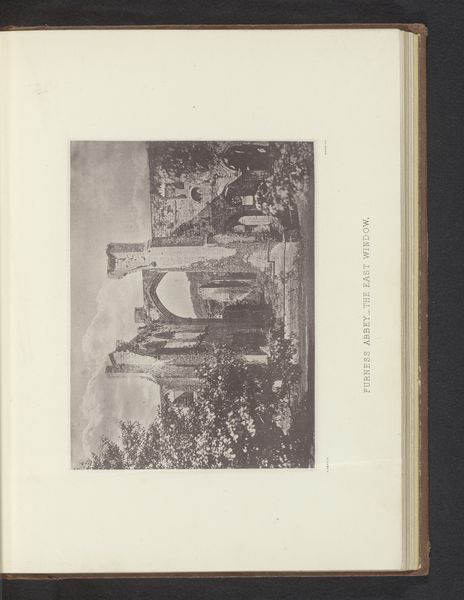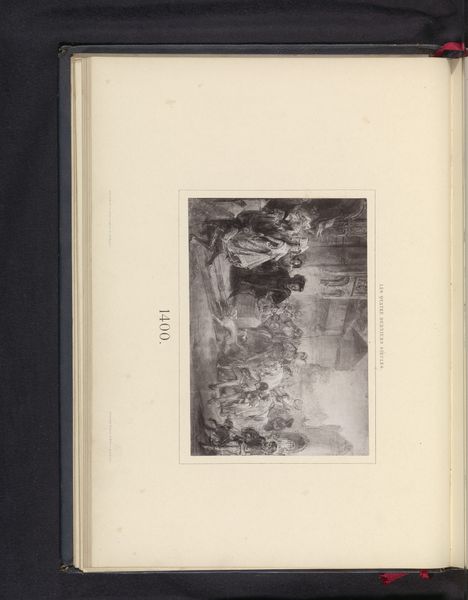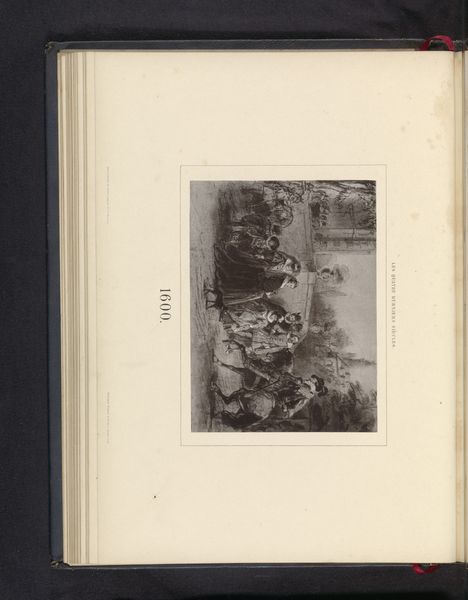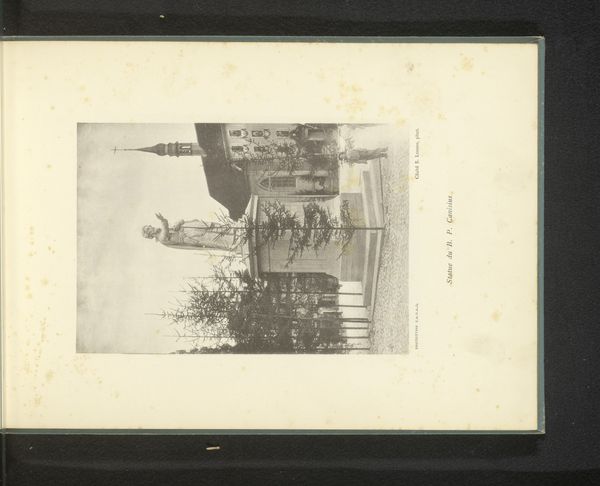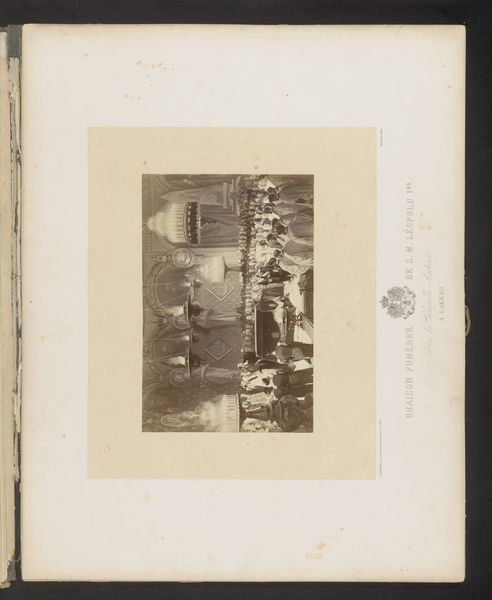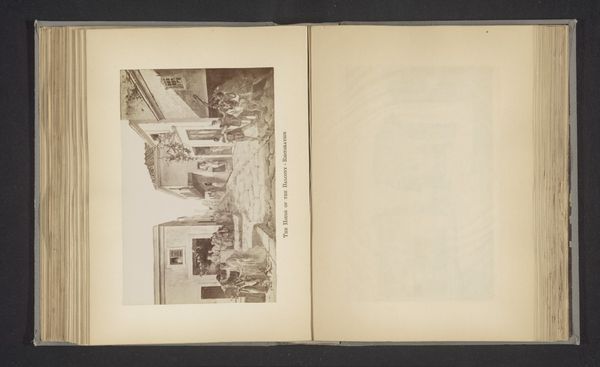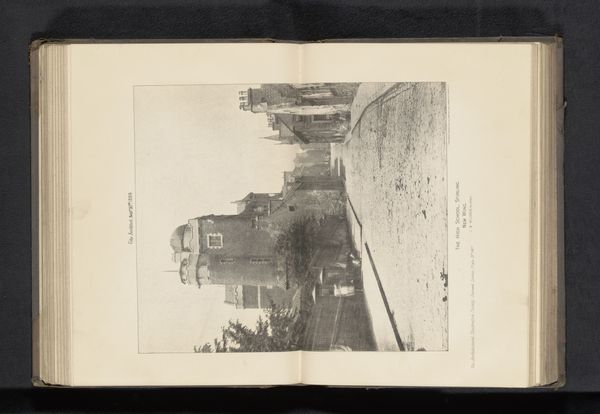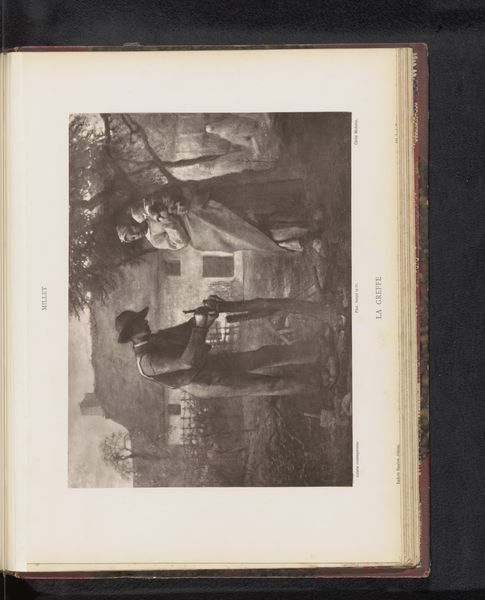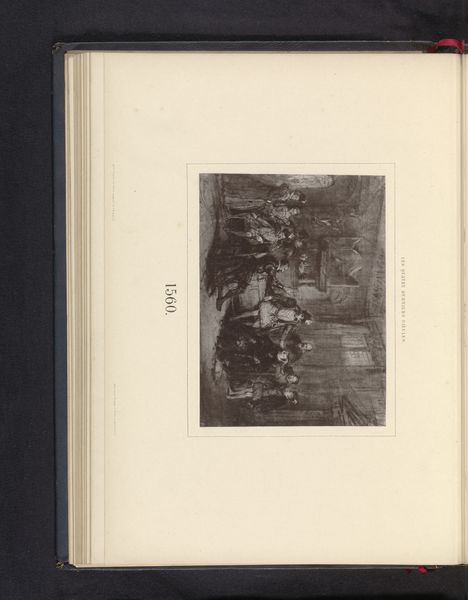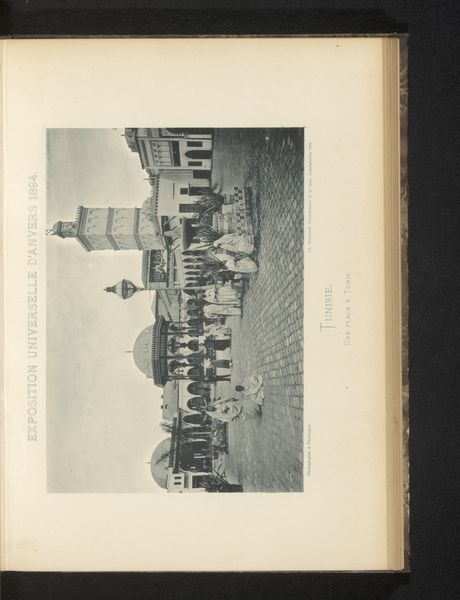
Dimensions: height 185 mm, width 243 mm
Copyright: Rijks Museum: Open Domain
Curator: This is an etching from before 1877 after Aimé Perret's work called "Reproduction of a Bresse Baptism." What catches your eye initially about it? Editor: It has a theatrical feel, almost stage-like. The crowd seems positioned as if watching a play, which I suppose a baptism is, in its way. What does it evoke for you? Curator: Baptism is an ancient rite, a ritual of purification and new beginnings. Perret seems to capture the communal aspect beautifully. Consider the architecture—the imposing doorway arch almost looks like the mouth of a whale ready to swallow a child. It harkens back to biblical stories like Jonah. Editor: That contrast between the ancient ritual and the seemingly modern setting raises interesting questions. Look at their clothing. How do they position themselves in the world? Are they willing to let go of harmful societal ideas that go against new beginnings for marginalized peoples? It's difficult to see from a two-dimensional work from so long ago. Curator: And that doorway might represent that portal—transition. Remember that baptism isn’t only a moment of acceptance into a Christian community, but also a moment of transition—cleansing before a fresh start. Editor: I can definitely get behind that, considering the historical period and perhaps the Bresse people themselves felt marginalized at that time. Still, while these ideas about religious and spiritual transformation remain somewhat hopeful, that historical background brings forth complexities that may affect marginalized populations. Curator: Indeed, symbolism always functions on multiple levels. Take the choice of clothing, for instance. On the surface, it’s local garb representing a region. Yet, perhaps these signifiers of belonging have been employed over the decades, if not centuries, to exclude people. It is an example of memory as an exclusion and inclusion tactic. Editor: Agreed, symbols are always subject to change and exploitation, and I think this really demonstrates how a baptism or similar type of "new beginning" often requires looking to historical roots, yet accepting future growth. It really seems like a snapshot in time. Thank you for bringing light to all these potential implications! Curator: My pleasure. It’s been wonderful thinking through the echoes of the past and the challenges for the future with you!
Comments
No comments
Be the first to comment and join the conversation on the ultimate creative platform.
